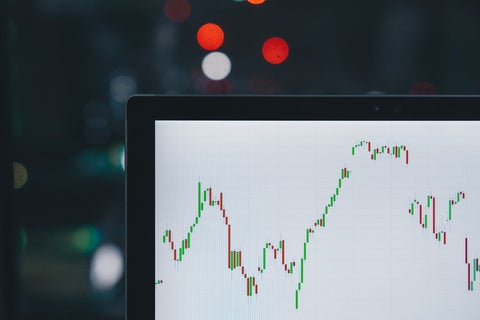How to Set Goals in Your CPG Analytics
Big data is a big deal. But you know that already! It’s why you’re reading about goals in analytics right!?
We’ve already taken a look at how important analytics are for CPGs. But what exactly should you do with all this data? This is where goal setting comes in…
The top performing CPG brands take a solidly data-driven approach to business. They identify insights and trends and use these to inform business decisions and set goals.
Carefully thought-through analytics goals for CPGs create a cycle of continuous improvement. It encourages brands and their digital efforts to consistently evolve and adapt to market needs.
So what’s the best way to set goals in your analytics? Let’s find out…

What are analytics for CPGs?
In short, CPG data analytics is anything related to the collection and analysis of information about your business. Analytics is the process of understanding and evaluating data — to distill this mass of information into meaningful insights.
This could include sales data, marketing results, customer demographics, website traffic, and more… the list goes on! Think of data as the points on your graph — analytics is how you understand the graph.
There are three main categories of data CPGs should pay attention to. This includes observational data, activity data and sales data:
- Observational data: including in-store insights such as stock levels, number of facings, promotional deals, competitor activity, etc. This can also incorporate any digital insights garnered from your website and online marketing activities.
- Activity data: your team’s efforts, for instance, what actions are your sales teams taking? How often are they visiting accounts and is this translating to sales?
- Sales data: you know this one! It’s how much of your product is sold in certain locations over a certain period. While it seems straightforward, granularity (i.e. breaking this down into meaningful categories) is important.
Focus on: Demographics
To set appropriate analytics goals, you have to understand your demographics. It’s all well and good focusing on boosting sales through online orders (for instance), but does this fit your customer profile?
There are many ways of gathering more information about your CPG customers. This could include information from contact-us forms, insights from google or Facebook CPC advertising, getting out there and talking to buyers (free tastings anyone?), and of course feedback from your sales teams!
Customer profiles include details such as age, location, job, hobbies, income, purchasing habits, motivations, challenges, or pain points. With a thorough understanding of your demographics, you’re ready to set appropriate targeted goals…
Build a customer funnel
The overarching goal of data analytics is to increase CPG sales and grow your business. But what’s the best way to do this?
Building an effective customer funnel should be a primary analytics goal for CPGs. Otherwise known as a purchase funnel, it’s all about your ideal customer journey. From social media data and marketing efforts (reflecting awareness and opinion) to consideration and preference stages (perhaps reflected in website traffic or google searches) all the way through to final purchase — there’s a wealth of data points to analyze at each stage.
Create a goal for each step. For instance, digital marketing goals for building awareness (perhaps click-throughs or impressions), product-page visits or google searches for consideration stages (are these increasing or decreasing over time in particular locations or demographics?), all the way through to overarching sales targets.
Key performance metrics for CPGs
Key performance metrics (or indicators, known as KPIs) are an essential part of setting analytics goals for CPGs. KPIs are the cornerstone of data analysis for any business. Without an appreciation of core values and goals, how do you know the data you’re collecting is relevant?
Here are three of the most important KPIs for any CPG data analysis:
- Promotional Lift: who doesn’t love a great discount? Make sure you understand whether promotions are actually adding value or detracting from existing sales, however! Look at incremental and non-incremental sales volume, but also other data points. For instance, have you expanded into new markets or different locations in store?
- Share of Category: this helps you understand where you fit in the broader CPG market, and whether there’s room for significant expansion. Good data analytics breaks information down into categories. Does size of product correlate with more or less sales, for one? Could this be used to drive further insights for your CPG?
- Shopper Loyalty: customer loyalty is key for CPGs. If you’re seeing a lack of returning customers, what could be the driving factors behind this — what could you do to encourage repeat purchases or attract new demographics? What analytics goals would be appropriate here?
The most important part of setting analytics goals for CPG is focusing on your own questions and business issues. This could be absolutely anything, as long as you can properly identify and state the problem, as well as the data sets needed to understand the issues.
To set appropriate analytics goals, ask yourself the following questions:
What do I want to accomplish and why?
This is the “qualitative” part of goal setting. We then need quantitative data…
Can I state this in numerical terms?
This encourages you to focus on how you’re going to calculate your goals. If you don’t already have the data available to help with this, can you design systems to get it?
How will I measure success?
Once you know the data you’ll be using, it’s time to think about how long is realistic to achieve your goals (and if you have the time to implement plans!). How and when will you calculate success?

Analyzing goal completion
Now you’ve set your goals… the next step is tracking goal completion over time.
Make sure all the key stakeholders and teams across your business have been involved in setting your analytics goals. This will ensure KPI targets are realistic and well-understood. With full buy-in, your colleagues will also be more involved with tracking metrics over long periods of time.
It almost goes without saying, but when deciding on your KPIs, follow the SMART model. SMART stands for specific, measurable, actionable, relevant, and timely. This essentially means that any goals are properly quantifiable and trackable.
This will allow you to have a proper structure in place for tracking the success of your analytics goals, as well as an appropriate timeframe from the very beginning. It’s a way of building-in appropriate “check-in” points to look at where your efforts excelled or fell short.
That analysis can then be used to feed the virtuous cycle of continuous improvement for your CPG to track activities, assess impact, and make great changes.
Analytics goals for CPGs recap
Data analytics can create massive value for CPGs, driving business innovation as well as sales. In the short term, appropriately tracking data provides a highly accurate picture of what’s happening across your business and sales locations in real-time. In the long term, this is where goal setting comes in! Analytics goals for CPGs allow businesses to focus on specific issues rather than just overarching sales — driving intelligent, long-term, and sustainable growth.
Buffalo Market is the leading distributor of mission-driven food and beverage brands. We’ll move mountains to get the job done, so you can focus on your business and your goals.
Our experts get the most exciting brands on the right shelves and help CPGs understand their online options. So if you want to feel like you’ve added an entire workforce dedicated to accomplishing your business goals, get in touch today.


